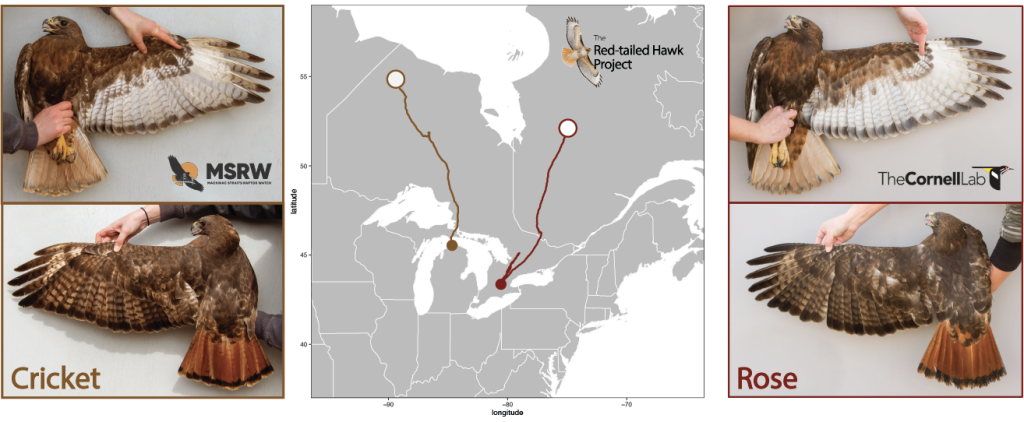
We’re currently celebrating some success from last years transmitter effort. Two of the dark birds we tagged, one that Nicole and Bryce caught in Ontario and one that Nick caught in Michigan, have returned for the winter and provided us with an insight into where they spent the summer. Both individuals spent their summer almost directly north of where they were caught, one in the northwest of Ontario and the other in the northern parts of Quebec (white circles in the figure).
Given their movements throughout the summer, we have reason to believe that both of these birds bred at these sites. In a forthcoming publication, we’ll outline their full cycle movements as well as provide an in depth description of their movements from the breeding season to support their breeding activities.
Does abieticola have a dark morph? An oversimplified answer seems to be yes, but we need to do more work to fully support this. The only way to confirm this is to do genomic analyses that will strengthen our understanding of the true origin of these dark types, and why we see them in the east at such a low frequency. For instance, these individuals could represent broad dispersal events from the west, and their offspring could face strong selective pressures that limit the true establishment of dark phenotypes in the east. The presence of these breeding adults may be explained by dispersal events that occur at such a frequency every generation but not result in the establishment of dark individuals that are genetically part of abieticola, or this far northeastern population of Red-tailed Hawks.
Our ability to put together this perspective on the origin of dark morphs that winter in the east is only possible through collaboration. Birders and ornithologists have wanted to answer the question of where these dark birds in the east originate for a long time, and the only way we have been able to uncover this is by working together. Under the Red-tailed Hawk Project, the Cornell Lab of Ornithology, Mackinac Straits Raptor Watch, and Hawk Ridge Bird Observatory, with support from the community, have all come together to answer this question. Stay tuned for a publication in the coming year that provides more details on these birds, and the coming genomic work that will help us further understand plumage polymorphism in this wonderful species.
See the eBird checklists for both of these birds:
Rose – https://ebird.org/checklist/S129215816
Cricket – https://ebird.org/checklist/S132717127
